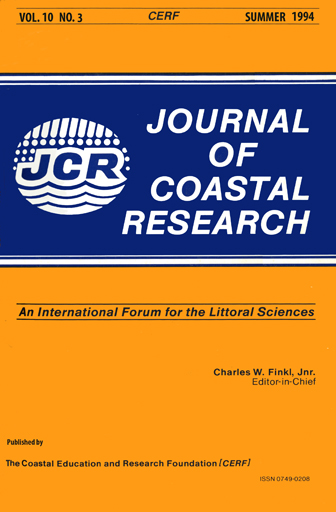Use of in vitro Propagated Ruppia maritima for Seagrass Meadow Restoration
Keywords:
Micropropagation, restoration, Zostera marina, in vitro culture, seagrasses, biotechnologyAbstract
The use of in vitro propagated Ruppia maritima for seagrass meadow restoration was evaluated in two experiments. Experiment 1 compared two different planting methods for in uitro propagated plants. In one method, cultured plants were attached to metal staples which were then inserted into the sediment. Almost all of these transplants disappeared within one month at the four different planting sites. For the other method, in vitro propagated plants were first transferred to peat pots and grown in a flowing seawater system for six weeks. These transplants showed 20 to 80% survival. Ruppia maritima was still growing in experimental plots after 11 months at three of the four sites. There was an increase in the number of short shoots m and the percent cover. After 23 months, there was decreased cover of R. maritima and an increase in Zostera marina. In Experiment 2, R maritima was propagated in vitro using a modified culture medium. Plants from these cultures were directly rooted ex vitro in peat pots during six weeks growth in a flowing seawater system. These planting units were transplanted to three sites. After 12 months, the experimental plots showed significant coverage of R. maritima at two sites. The other site was a more exposed location and had no R. maritima in the experimental plots from either Experiment 1 or 2, probably due to the severe winter storm of 1993. The increase in shoot numbers and areal coverage in the experimental plots suggests that if R. maritima can be propagated in vitro and used successfully for habitat restoration.


